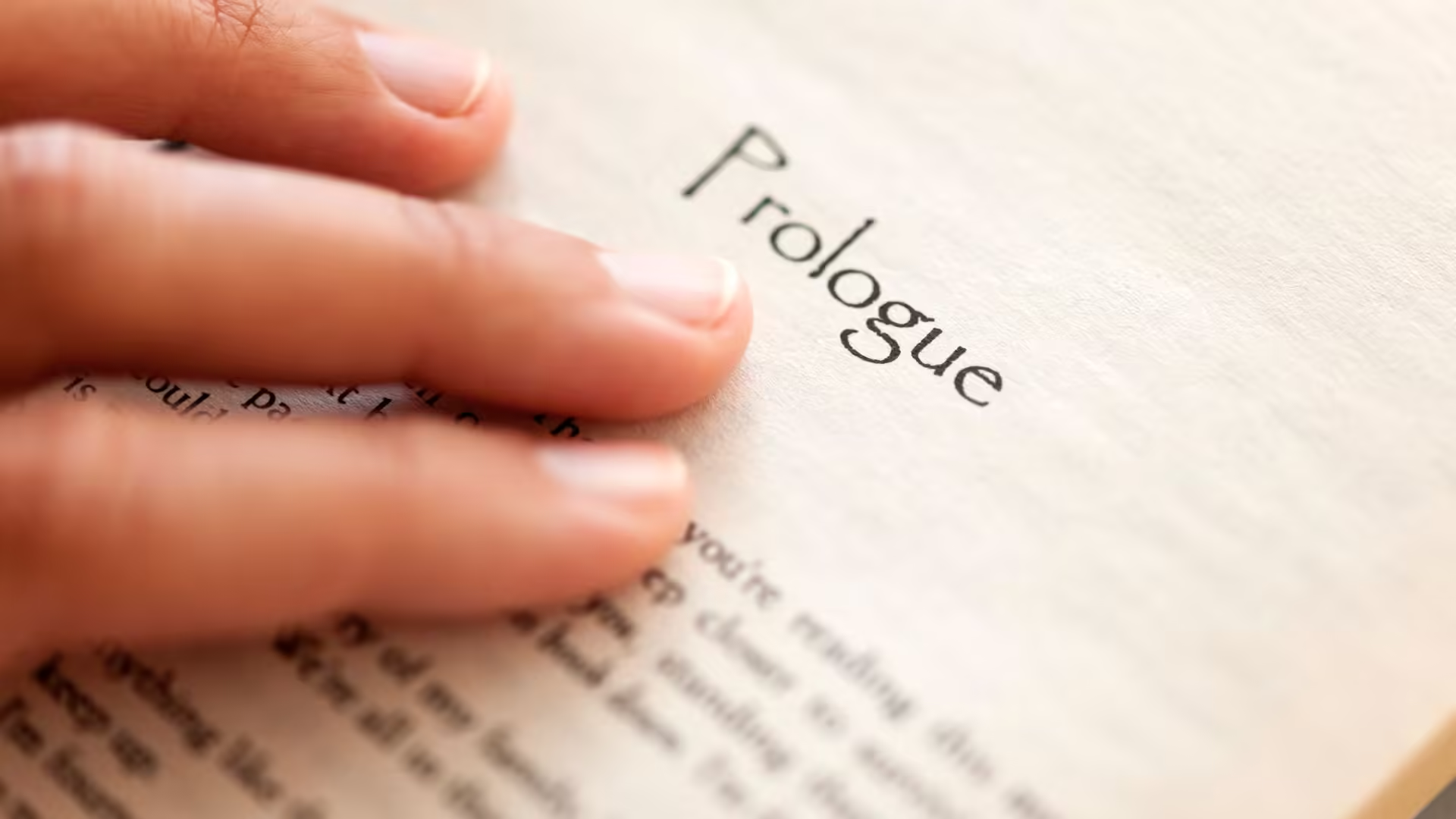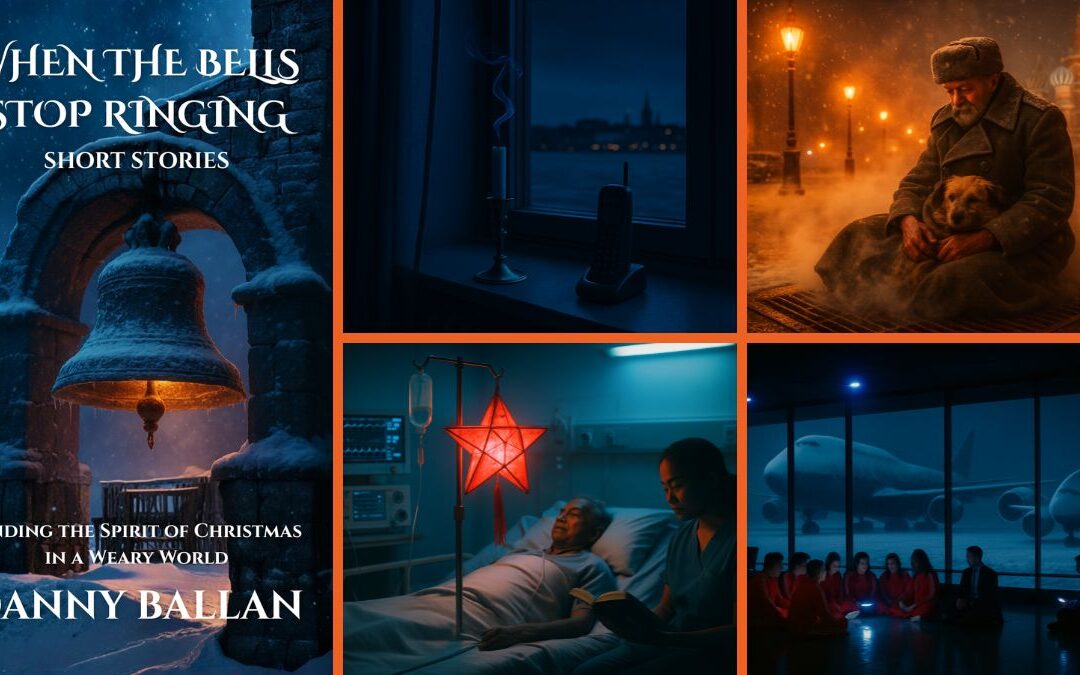Prologues and epilogues serve as the bookends of your story, framing the narrative in a way that can add depth, context, and closure. But crafting these sections effectively can be a challenge. When done right, they elevate your story, drawing readers in and leaving them with a lasting impression. Let’s explore how to write prologues and epilogues that enhance your storytelling and resonate with your audience.
What Is a Prologue?
A prologue is an introductory section of a story that sets the stage for the main narrative. It can provide background information, introduce key themes, or offer a glimpse into the world of the story. However, a prologue should not be a dumping ground for exposition. Instead, it should intrigue the reader, offering just enough information to hook them and make them eager to dive into the rest of the story.
When Should You Use a Prologue?
Not every story needs a prologue, but there are times when it can be a powerful tool. Consider using a prologue if:
- You Need to Set the Tone: A prologue can establish the mood of your story, whether it’s ominous, mysterious, or lighthearted. For example, in George R.R. Martin’s A Game of Thrones, the prologue sets a chilling tone that hints at the dangers lurking beyond the Wall, framing the epic story to come.
- You Want to Provide Backstory: Sometimes, a story’s backstory is crucial to understanding the main plot but doesn’t fit neatly into the first chapter. A prologue can provide that essential context without disrupting the flow of the narrative.
- You Want to Foreshadow Events: A well-crafted prologue can foreshadow events that will unfold later in the story, creating a sense of anticipation. For example, in Romeo and Juliet, the prologue summarizes the tragic fate of the star-crossed lovers, setting the stage for the drama that follows.
How to Write an Engaging Prologue
To write a compelling prologue, keep these tips in mind:
- Keep It Short and Relevant: A prologue should be concise, offering just enough to intrigue the reader. Avoid overloading it with information or making it too long.
- Create a Strong Hook: The first few lines of your prologue should grab the reader’s attention. Whether it’s a shocking event, a mysterious statement, or a vivid description, make sure it pulls the reader into the story.
- Make It Meaningful: Your prologue should serve a purpose. Whether it’s providing backstory, setting the tone, or introducing a key theme, ensure it’s integral to the overall story.
- Maintain Consistency: The tone, style, and voice of the prologue should align with the rest of the story. While it can stand apart in terms of content, it should feel like a cohesive part of the narrative.
What Is an Epilogue?
An epilogue is a concluding section that provides closure to the story. It can offer a glimpse into the characters’ lives after the main events, tie up loose ends, or present a final reflection on the story’s themes. An epilogue can be a satisfying way to provide resolution, but like the prologue, it should be used thoughtfully.
When Should You Use an Epilogue?
Consider using an epilogue if:
- You Want to Show What Happens Next: After the main events of the story, readers might be curious about the characters’ futures. An epilogue can provide that satisfying closure, showing how the characters have grown or what challenges they might still face.
- You Need to Tie Up Loose Ends: If there are unresolved plot points or lingering questions, an epilogue can address them without dragging out the main story.
- You Want to Reflect on the Story’s Themes: An epilogue can serve as a space for reflection, offering a final commentary on the story’s themes or the characters’ journeys.
How to Write a Satisfying Epilogue
To craft a meaningful epilogue, consider the following:
- Provide Closure: The epilogue should give the reader a sense of completion. Whether it’s a glimpse into the characters’ futures or a resolution to the story’s themes, it should leave the reader feeling satisfied.
- Avoid Overloading with New Information: The epilogue isn’t the place to introduce new plot twists or characters. It should focus on wrapping up the story, not extending it unnecessarily.
- Keep It Brief: Like the prologue, the epilogue should be concise. It’s a concluding section, not a new chapter, so keep it focused on providing closure.
- Match the Tone: The tone of the epilogue should be consistent with the ending of the story. If the story ends on a hopeful note, the epilogue should reflect that. If it’s bittersweet, the epilogue should maintain that mood.
Real-Life Examples of Effective Prologues and Epilogues
Consider these well-known examples to see how prologues and epilogues can enhance storytelling:
- Prologue: In The Hunger Games by Suzanne Collins, the prologue introduces the concept of the Hunger Games and the oppressive world of Panem, setting the stage for the conflict and themes that drive the story.
- Epilogue: In Harry Potter and the Deathly Hallows, the epilogue provides a glimpse into the future lives of the characters, offering fans closure after the epic journey they’ve followed.
Take Action
Now that you understand the power of prologues and epilogues, consider how they might enhance your own writing. If you’re working on a story, think about whether a prologue or epilogue could add depth or closure. Experiment with these sections, but always remember to keep them purposeful and relevant to the overall narrative.
By exploring the art of writing prologues and epilogues, this article encourages you to take your storytelling to the next level. How will you use these bookends to frame your next story? Take action, experiment with these techniques, and see how they can elevate your writing.
Expand Your Vocabulary
- Prologue
- Meaning: An introductory section of a story that provides background information or sets the tone for the main narrative.
- In Context: The article explains how a prologue can establish the mood or introduce key themes in a story. In everyday use, you might refer to the beginning of any project or event as a prologue, like, “The meeting served as a prologue to the larger conference.”
- Epilogue
- Meaning: A concluding section that provides closure to a story, often showing what happens to the characters after the main events.
- In Context: The article discusses how an epilogue can wrap up loose ends and provide a sense of completion. You might use this term when referring to the final part of any situation, such as, “The epilogue of their relationship was a peaceful resolution after years of conflict.”
- Hook
- Meaning: A compelling opening that grabs the reader’s attention and draws them into the story.
- In Context: The article suggests that a strong hook is essential for an engaging prologue. In everyday language, you might use this term to describe anything that captures interest, like, “The catchy melody was the hook that made the song a hit.”
- Backstory
- Meaning: The history or background information that explains the context of a character or situation in a story.
- In Context: The article explains that a prologue can provide important backstory without interrupting the main narrative. In conversation, you might use this term when discussing someone’s past, like, “Knowing his backstory helps you understand why he behaves the way he does.”
- Foreshadow
- Meaning: To give an indication or hint of what is to come later in the story.
- In Context: The article highlights how a prologue can foreshadow future events, creating anticipation for the reader. You might use this word in everyday situations to describe a sign of something to come, like, “The dark clouds foreshadowed the approaching storm.”
- Closure
- Meaning: A sense of resolution or completion, particularly at the end of a story or situation.
- In Context: The article emphasizes the importance of providing closure in an epilogue. You might use this term in everyday life when discussing the end of a chapter, like, “She needed closure after the breakup to move on.”
- Tone
- Meaning: The overall mood or feeling conveyed by a piece of writing or a situation.
- In Context: The article advises that the tone of a prologue or epilogue should match the rest of the story. In daily language, you might talk about the tone of a conversation or event, like, “The tone of the meeting was surprisingly positive despite the challenges.”
- Cohesive
- Meaning: Forming a unified whole; elements that work well together and are consistent.
- In Context: The article suggests that prologues and epilogues should feel cohesive with the main story. You might use this word to describe anything that fits together well, like, “Her presentation was cohesive, with each point building on the last.”
- Resolution
- Meaning: The part of a story where conflicts are resolved and the plot comes to a satisfying conclusion.
- In Context: The article mentions that an epilogue can offer resolution by addressing unresolved plot points. In everyday use, you might talk about resolution in terms of solving problems, like, “The resolution of the issue left everyone feeling relieved.”
- Theme
- Meaning: The central idea or underlying message of a story or piece of writing.
- In Context: The article explains how a prologue can introduce the key themes of a story. You might use this word to discuss the main idea of any creative work or conversation, such as, “The theme of the movie was the power of friendship.”
Let’s Talk
- Have you ever read a book where the prologue or epilogue made a significant impact on your understanding or enjoyment of the story? How did these sections enhance the narrative for you?
- This question encourages you to reflect on your reading experiences and consider how prologues and epilogues have contributed to your overall engagement with a story.
- When writing your own stories, how do you decide whether to include a prologue or epilogue? What purpose do you want these sections to serve in your narrative?
- This question prompts you to think about the role of these sections in your writing and how they can add depth and meaning to your story.
- The article discusses using a prologue to set the tone of the story. How do you approach setting the tone in your writing, and what techniques do you use to ensure it remains consistent throughout the story?
- This question encourages you to explore how you establish and maintain tone in your writing, considering how it influences the reader’s experience.
- In what ways can an epilogue provide closure or resolution to a story? How important do you think it is for readers to have a sense of completion at the end of a narrative?
- This question invites you to consider the importance of closure in storytelling and how an epilogue can help achieve that.
- Prologues can foreshadow events in a story, creating anticipation for the reader. How do you use foreshadowing in your writing, and what effect does it have on your storytelling?
- This question encourages you to think about the technique of foreshadowing and how it can be used to build suspense and engage readers.
By engaging with these questions, you can deepen your understanding of prologues and epilogues and their role in storytelling. Discussing these ideas with others or reflecting on them personally can help you enhance your own writing and create more impactful narratives.










0 Comments